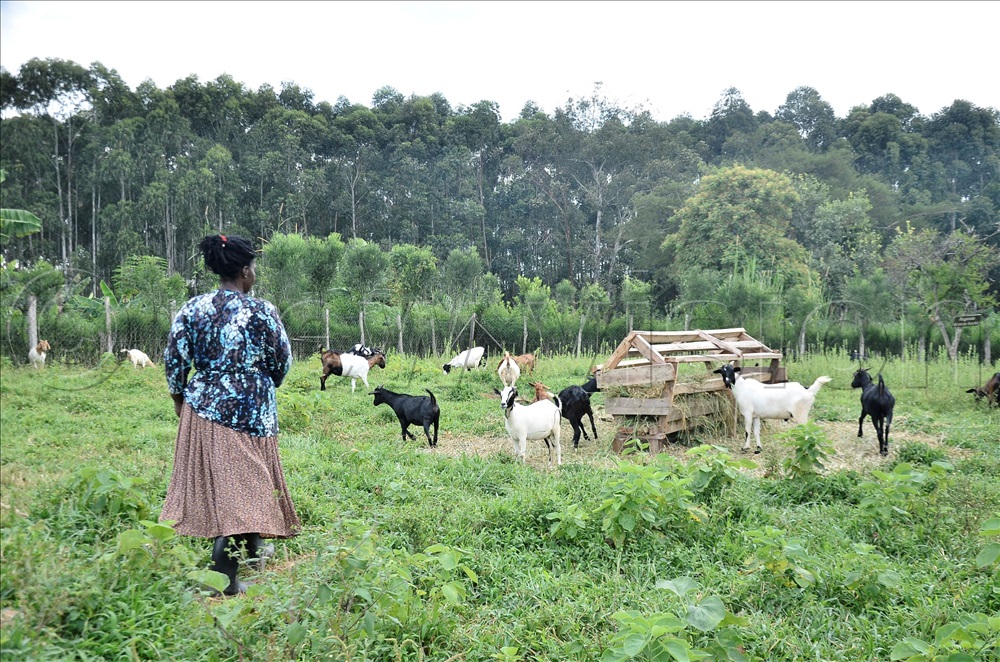By Umar Nsubuga
Animal identification is necessary for records, registration, and proof of ownership at the farm.
Phoebe Kagambe Kusiima, a goat farmer says identification is very helpful for goat breeds with more uniform colouring like Savannahs and Boers.
For a commercial farmer, Kagambe says this should be a requirement at your farm and they (goats) should have permanent identification.
Ear tags are often used, but may be lost, especially if the goats are in crowded or brushy areas.
It’s important that every goat born is tagged in two weeks, however, in the future Kagambe advises farmers to tattoo the animals because it is permanent.

Grazing system
Goats are natural browsers but they also do graze. They are, however, selective in their feeding behaviour and they do well where they feed on a variety of feeds.
For example, at Kagambe’s farm, the goats are grazed on an extensive paddock farm system.
She says the main feed is shrubs, bushes (and wild fruit/pods) and grass.
Muhammad Kiyemba, another goat farmer says the hours of grazing are also important. The goats should be controlled for 4-5 hours a day while grazing and browsing over large areas of the paddocks on the farm.
Goat housing
According to Kagambe, it is important to house your goats to protect them from adverse climate conditions like rain, sun and wind, predators and thieves.
Each adult goat should be allowed a floor space of 1.5 square metres.
The type of house constructed depends on the management system and the environmental condition of the area.
Attributes of the house, Kagambe says it warms and is easy to clean, animals can be fed at the pens and the floor is well drained resulting in reduced foot rot incidences.
“The house must be raised on concrete pillars and the floor should be cemented to allow collection of droppings and urine,” she says.
She adds It should be constructed using timber and roofed with iron sheets. It has to be ventilated, with light inside, an extensive yard, easy to clean, drought-proof and provides efficient drainage.





